Interview of Aske Svarte by Nikarev Leshy
 Slava Evgeny Nechkasov, thank you for agreeing to an interview. Please can you introduce yourself and tell us a little about your background?
Slava Evgeny Nechkasov, thank you for agreeing to an interview. Please can you introduce yourself and tell us a little about your background?
AS: Heil and greeting for all! I am the founder of the community of pagans “Svarte Aske” located in city Novosibirsk, Russia. I’m an Odinist pagan since my 17 years. I don’t oppose Odinism to Asatru or other name-for-tradition, for me the names are secondary thing. I also don’t belong to far-right racist groups who see themselves as “Odinists” or “Wotanists”.
Before Odinism I was deep interested in Western Occultism. I started when I was 15 years old, my first book about Gnosticism was the “Gospel of Judas”, its changed my life. After the Gospel I started to study famous European occult studies and books like Theurgy, Goetia, Alchemy, Masonry & Rosicrucian orders, Thelema and the heritage of Aleister Crowley. Shortly – I eagerly learned the European occult and spiritual history context, and I keep it today.
Being a very spiritual person with a keen interest in nature, can you tell us how you initially got involved with ancestral spiritual traditions, your development ideologically, and spiritually?
AS: While I studied occult I found the Dobroslav’s works about Slavic paganism and a little bit later the “Vargsmal” by Varg Vikernes, they two brought me to paganism, especially Odinism, and I started to study and practice this way. Later on I discovered Veleslav’s philosophy and philosophy of traditionalism (R.Guenon, J. Evola), represented in Russian school of traditionalism created by Evgeny Golovin, Yury Mamleev and more famous now – Alexander Dugin.
I had already taken a part in political movements and activities, but tradition and spiritual self knowlege will always be on first.
Firstly I did rituals and practices to discover a bound with Mother-Nature. It was very simple practices, for example – being in forest and listening, talking with Nature, walking without shoes, discovering faces of Nature powers, forest spirits. For a man who was grown up in big town it was necessary. After this I began to sink deeper into pagan philosophy, magic and ideology. I think it very important to know the roots, the primary deepest principle (ontology) and keep balance between outside and inside, between forms that come from ancient heritage, folklore and internal content of tradition.
I began (2008-2009 e.v.) to notice that in my town there was not any adequate form of pagan community. For last three years, so I have made contact with different people and sometimes it causes trouble, but my inner resolve is strong and I didn’t become a fake-pagan like wiccans or a New-Age syncretic clowns =) Since 2009 year era vulgaris I tried to create a community, a circle of same-minded people and now in Novosibirsk we have that community.
In Russia, the main native faith is Rodnovery, can you tell is about that please?
AS: Yes, I know about Rodnovery and I was Rodnover for a little, but my German blood prevailed and I became an Odinist. I read a lot of Rodnovery texts and books and a lot of my friends are Rondovers too and I think that Veleslav has had an influence on me a lot, and now he is my good friend. So I think that Rodnovery is a very exiting deep philosophy, a real continuation of Slavic-Russian paganism in the modern period.
Please tell us your view of the right and path and left hand path, and especially is relation to the native faiths of Rodnovery and Odinism.
AS: The Right Hand Path is to follow the accepted way of the family (clan), community and / or public order. This is the way for the majority and a way to preserve and transmit the repetition of the existing order and values in the next generation.
This is honoring and glorifying the Light gods, gods who receive gifts which are given in prayer by practitioners, guardians, creators. This is Honoring the earthly kind, blood and ancestors.
This realization of wisdom, of their tradition, is done by practitioners of the Right Hand Path by following the proper and accepted way for three basic states:
– Labour and procreation for farmers and artisans,
– The acquisition of fame and acts of bravery for the Warrior,
– The authority of the board to the King
– The wisdom and teachings of others, for the Priest (Godhit, Volhv, Brahmin).
This is living a life according to the accepted way which is to be procreative, acquire fame and strengthen the authority of the people; know wisdom, and to be reborn in a new cycle in a worthy embodiment; to realize themselves outside.
The Right Hand Path is the dual perception of the world.
The Left Hand Path is a radical, non-conformist way of Self-knowledge. It is done inside the adept.
This Path patronizes those gods who are considered conditionally dark, angry, and destructive. These are the gods of Death and Wisdom. That which is feared and guarded by ordinary people along the way becomes a source of strength, inspiration and offers radical tools to those of the Left Hand Path overcome their conditioning and attachments.
The Left Hand Path is Knowledge of Yourself as the Primordial Abyss, by separating (non-identification) ourselves from any of its forms, masks, and attachments.
This Path is the non-duality perception of the world.
The rituals and practices of the Left Hand Path to the uninitiated may seem horrible and insane, senseless and repulsive, therefore, at the community level, they are on the periphery and practiced without prying eyes.
You cannot instruct the person in the Left Hand Path, he must stand by himself. This is where he is Himself – it is not his personality, social mask or Ego. At this level, the only choice is made between the external forms, without dipping into the essence and Himself – this is what He never ceased to be (whether he is aware of it or not) – Great Abyss.
According the Rodnovery and Odinism we have one main problem: in ancient times the LHP practices, cults of Darkness Destructive Gods…didn’t exist.
We haven’t got a wide tradition like Vamachara or Tantra in Hinduism in Odinism and Rondovery, so this way is very dangerous in many aspects. In Rodnovery Veleslav has created much work on this approach, he describes the authentic Slavic “dark” heritage and has written a few books with his own experience on this Path. In Odinism I see the same situation. It is very important to say that LHP doesn’t mean “satanic” or “evil”, it is not about this moral duality.
You are a practitioner of Odinism, specifically Left Hand Path Odinism. Firstly, why did you choose Odinism as your native faith, and please inform us about exactly what Left Hand Path Odinism is?
AS: About why I’m an Odinist I have answered above. Turning point to LHP it was on autumn a couple years ago, as I think it was not a question such as an Ego choice such as “Why I am not a LHP practitioner?” and so on. It was more like a superposition of your inner readiness, a transcendental factor and environmental factor and an existential feeling. And in that time you understand that everything is not real, not what you must follow. This feeling from outside brings you to LHP or to madness.
I view LHP Odinism as way of self knowlege. Who are you really? A worker, a social mask, a prayer for ancient gods or just a man? Or you are more than God, the Great Abbys Ginnungagap without any duality. Who looks at the World from your eyes, a man, an Ego, social masks or Eternal Almighty Darkness? Its looks like Advaita-Vedanta or Shivaism, if we want to describe it by such famous doctrines.
You have also taken on the name, Askr Svarte. Please explain?
AS: I have taken the name Askr when I turned to Odinism. Askr – it means Ash, the World Three Yggdrasil and the first man in Elder Edda. It is bound with macrocosm and microcosm too. Later I added the prefix Svarte that mean “Black”, to underline my LHP views. In my book “Gap” I describe some interesting parallels between my name and my way as I call it “Svarte Aske”.
Please can you tell us about Svarte Aske, the Darkside Odinism, which you developed in Russia?
AS: For the most part I have described it above, so I just make two remarks about:
1) Svarte Aske is how a see my vision and experience of Darkside Odinism and the same name I gave to community of pagans in my town.
2) The Darkside Odinism is a path to non-duality view (like Advaita). It is a very hard path because we haven’t got a complete philosophy, myths, etc about non-duality ideas in Northern Paganism. We have only few hints about this deep dimension of Odinism. And it looks like a summons to man, it is very hard task to follow it. And my way, my work is just began, there are many discoveries yet to come.
You have written five books to date: Sketches of Misanthropy (Зарисовки мизантропии), 2011, Svarte Aske (including Sketches of Misanthropy) [полностью включая Зарисовки мизантропии], 2012, Gap (a continuation on Svarte Aske), 2013, the Book of Indifference (a post script to Sketches of Misanthropy), 2013, and Notes from the Inside Out, 2013. Please tell us about each of these books.
AS: These are small books I self publish.
The first little book was about existential situation on the stage so-called “Nigredo” – when you wake up in Hell and start to follow towards the Sacred, away from the profane anti-traditional world. This book is full of hatred.
The second was the “Svarte Aske” where I put a spiritual part to Sketches and made a whole picture contains two equal parts: spiritual and existential.
Next step was the book “Gap” is only about LHP in Odinism: theory and practices and a few applications about same theme. And the “Book of Indifference” is a post scriptum to existential part of my early view; it’s a very grave small book not in print.
And finally – “Notes from the Inside Out” – this a book in which I participated, its book about strange and paradoxical Russian soul and worldview. This book differs from other, because isn’t about paganism or the LHP etc, but I found this funny-strange book very interesting.
Tell us your influences are with regard to Darkside Spiritualism.
AS: I have experienced the greatest impact from the three authors: Volhv Veleslav, Julius Evola and Alexander Dugins works about traditionalism. I integrated their views and enriched their teachings by my experience and thoughts to develop my own Path.
It is particularly interesting that only Veleslav have any relation to darkside spiritualism, two others are great thinkers who helps to maintain the intention required.
You are influenced by, and are a good friend of Volhv Veleslav, a man I greatly respect and admire. Please tell us how about this man, and how he has influenced you.
AS: Yes, Veleslav is my good friend and we have similar views. Firstly I found his articles and books about Rodnovery then I was 16, and later I discovered his Darkside view (Шуйный Путь) and I was very excited by it. I was very impressed by his depth and poetry in his books, and they contained very powerful and deep content.
I met him face to face in his book store, then I came to Moscow in 2011 e.v. to the international conference “Against the Post-Modern World”. We have talk a little and later I visited him several times, and finally I organized his visit to my town in 2013 e.v. with lectures about spirituality and LHP in Rodnovery (Шуйный Путь).
Now we are working on a small joint project.
What is ‘Шуйный путь’, and does this concept play any part in left hand path of Odinism within the Nordic Tradition in Russia?
AS: Шуйный Путь is the name of LHP in Russian Rodnovery, it is a very interesting theme developed primarily by Veleslav. In the several books he wrote about some parallels between Rodnovery and Odinism: goddess Hel = goddess Mara, god Odin = god Veles in the same way. But in the Russian Nordic Tradition communities nobody interested in his works seriously, except Anton Platov maybe (a famous Russian runemaster). And I think nobody excepting me are using his works in developing LHP in Odinism in Russia.
For some, Volhv Veleslav is criticised for his usage of Aryan-Vedic symbolism within his spritualism of Rodnovery and ‘Шуйный путь’, with critics saying that Aryan-Vedic/Hinduism has no place within Native Faith. What is your view?
AS: I think we have the right to use the comparative mythology method from science. If we have holes in our traditions we should fill them and to fix this problem, we can study and learn from other Indo-European traditions to understand the principles. After that we should to adapt our understanding using the language of our pagan tradition and culture. In other words its looks like transfer from another to ours with translating. But transfer are not mixing, and I think that much of the criticism comes from thinking that he is mixing, but he is really fill the gaps in the Russian pagan tradition using a justifiable method.
In Russia and England, Aryan-Vedic/Hindu practices seen to influence the native faith of Odinism and Rodnovery. Please can you tell us more about this? How and why would this ‘Indian’ spiritualism influence the native faith of our respective countries? Why is it important?
AS: In Hinduism, Odinism and Slavic paganism there is the common Indo-European root. They have much in common in their structure and in their esotericism. While in Russia there is a revival of paganism, many lost traditions can be recovered on the basis of Hinduism. This is the influence and inspire of Hinduism.
What can we take from the Aryan-Vedic traditions to help us develop spiritually within our own Native Faiths, why is it important, and how has it helped you personally?
AS: Touching on the Left Hand Path, we can find a lot of useful in Hinduism, where this direction (Vamachara) was highly development. We can be inspired and take a sample with the Shaivites. But it is important not to blindly copy their rituals, and to understand their nature and adequately authentically reproduce their ESSENCE as part of our own traditions. Personally, I was helped by these rituals and practices such as Aghora, some of which quite organically fall into the overall fabricof Odinism such as Meditation on death, eating meat, working with bones and practice in cemeteries.
Both yourself and Volhv Veleslav utilize images of death and darkness (skulls, sickle, etc), symbols significant to understanding the ‘true self’, the ‘I’. Please can you tell us a little more about this?
AS: Many people believe that they are what they see in the mirror, a mask of flesh and a social role, and most people are afraid of death, skulls and bones. But the point is that in the flesh and blood of every person lies a skull and for each “false ego” hides the true nature of man, his Self. These symbols of death underline the traumatic stress of this experience, this is the final exposure. Any spiritual experience gained by the person can reveal yet another mask, but if you are bared skull then you are exempt.
Both yourself and Volvh Veleslav give many talks on your respective traditions of Native Faiths, including lectures on Svarte Aske and Шуйный путь, to a growing audience. Please can you tell us some things that are covered in these lectures to non Russian speakers?
AS: This is an incredible question. For the Western listener should come foremost to understand and realize that there is a modern Scandinavian or Russian paganism, or Right Hand Path. Then it will be easier to make sense, to understand the language in which Veleslav and I talk about the Left Hand Path. In general, the best advice for those who wish to comprehend a Russian Rite Odinism or Rodnoverie is to learn the Russian language and culture. Without this basic knowledge, even translations will lose about half of the subtle nuances and meanings.
Perhaps, the main thrust of the lectures can be expressed as: Memento Mori. Do not be an asshole.
Questions by Nikarev Leshy.
Source on Living Traditions Magazine
Interview on Heathen Post











